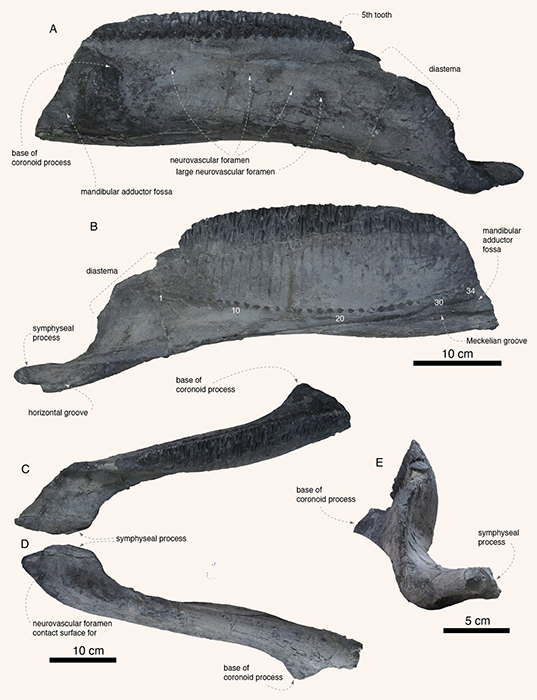Meet Yamatosaurus izanagii, New Hadrosaur from Japan

Yamatosaurus izanagii roamed our planet 71.8 million years ago during the Late Cretaceous period.
Hadrosaurs, or duck-billed dinosaurs, were successful herbivorous dinosaurs during the Cretaceous period.
Their fossil record is known mainly from the Early Cretaceous deposits of Europe and eastern Asia, whereas derived forms are known from the Late Cretaceous rocks of all continents except Australia and the Indian subcontinent.
Uniquely adapted to chewing, hadrosaurs had hundreds of closely spaced teeth in their cheeks. As their teeth wore down and fell out, new teeth in the dental battery, or rows of teeth below existing teeth, grew in as replacements.
“The dental structure of Yamatosaurus izanagii distinguishes it from known hadrosaurs,” said Dr. Anthony Fiorillo, a paleontologist in the Institute for the Study of Earth and Man at Southern Methodist University and the Hokkaido University Museum.
“Unlike other hadrosaurs, the new hadrosaur has just one functional tooth in several battery positions and no branched ridges on the chewing surfaces, suggesting that it evolved to devour different types of vegetation than other hadrosaurs.”
“Yamatosaurus izanagii also is distinguished by the development of its shoulder and forelimbs, an evolutionary step in hadrosaurid’s gait change from a bipedal to a quadrupedal dinosaur.”

The fossilized remains of the new hadrosaur — a lower jaw, teeth, neck vertebrae, shoulder bone, and tail vertebra — were found in 2014 by amateur fossil hunter Shingo Kishimoto.
They were recovered from blocks of dark gray mudstones of the upper part of the Kita-ama Formation exposed at a quarry in Yura Town on Japan’s Awaji Island.
“In the far north, where much of our work occurs, hadrosaurs are known as the caribou of the Cretaceous,” Dr. Fiorillo said.
“They most likely used the Bering Land Bridge to cross from Asia to present-day Alaska and then spread across North America as far east as Appalachia.”
The discovery of Yamatosaurus izanagii is reported in a paper in the journal Scientific Reports.
_____
Y. Kobayashi et al. 2021. A new basal hadrosaurid (Dinosauria: Ornithischia) from the latest Cretaceous Kita-ama Formation in Japan implies the origin of hadrosaurids. Sci Rep 11, 8547; doi: 10.1038/s41598-021-87719-5
Source: www.sci-news.com/








